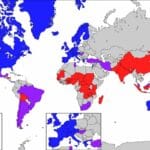Unlock the power of movement in Spanish! This guide provides a comprehensive exploration of caminar conjugation, equipping you with the skills to express walking and related concepts fluently. Whether you’re a beginner taking your first steps or an advanced learner seeking to refine your understanding, this guide has something for you. From simple present tense to the complexities of the subjunctive, we’ll cover it all. Let’s embark on this journey together and conquer caminar in all its forms!
Why Caminar Matters
Caminar, meaning “to walk,” is a cornerstone verb in Spanish. Just like in English, talking about walking is incredibly common, whether you’re discussing your daily routine, giving directions, or simply describing an activity. Mastering caminar opens doors to countless conversations and significantly enhances your ability to communicate naturally in Spanish. It’s like gaining a key to unlock a whole new level of fluency.
Caminar: A Regular -AR Verb
Here’s some good news: caminar is a regular -AR verb. This means it follows a predictable pattern, making it easier to learn than those tricky irregular verbs. Once you grasp the conjugation of caminar, you can apply this same pattern to hundreds of other -AR verbs, significantly expanding your vocabulary. It’s like learning a secret code that unlocks a treasure trove of Spanish words!
Conjugation Breakdown: A Step-by-Step Guide
Spanish boasts 18 tenses, which might seem daunting at first. However, we’ll focus on the most frequently used tenses in this guide, providing a solid foundation for your learning. You’ll be amazed at how quickly you can pick them up! For a complete list of tenses, resources like SpanishDict and Ella Verbs are excellent references. These resources provide a deep dive into all 18 tenses, covering everything from the indicative and subjunctive to the imperative and conditional.
Present Tense: Walking Now
The present tense is your everyday companion, used to talk about habitual actions and things happening right now.
| Pronoun | Conjugation | Example | Translation |
|---|---|---|---|
| Yo | camino | Yo camino a la escuela. | I walk to school. |
| Tú | caminas | Tú caminas muy rápido. | You walk very fast. |
| Él/Ella/Usted | camina | Él camina con su perro. | He walks with his dog. |
| Nosotros/Nosotras | caminamos | Nosotras caminamos juntas. | We walk together. |
| Vosotros/Vosotras | camináis | Vosotros camináis por el parque. | You all walk through the park. |
| Ellos/Ellas/Ustedes | caminan | Ellos caminan todos los días. | They walk every day. |
Preterite Tense: Walking in the Past
The preterite tense transports us to the past, allowing us to talk about completed actions.
| Pronoun | Conjugation | Example | Translation |
|---|---|---|---|
| Yo | caminé | Ayer caminé al parque. | I walked to the park yesterday. |
| Tú | caminaste | Tú caminaste mucho ayer. | You walked a lot yesterday. |
| Él/Ella/Usted | caminó | Él caminó con su perro ayer. | He walked with his dog yesterday. |
| Nosotros/Nosotras | caminamos | Nosotras caminamos juntas ayer. | We walked together yesterday. |
| Vosotros/Vosotras | caminasteis | Vosotros caminasteis por el parque ayer. | You all walked through the park yesterday. |
| Ellos/Ellas/Ustedes | caminaron | Ellos caminaron todos los días la semana pasada. | They walked every day last week. |
Future Tense: Walking Tomorrow
Looking ahead? The future tense is your tool! While a traditional future tense exists, using “ir + a + infinitive” is common and perhaps easier.
| Pronoun | Conjugation | Example | Translation |
|---|---|---|---|
| Yo | voy a caminar | Mañana voy a caminar a la playa. | Tomorrow, I’m going to walk to the beach. |
| Tú | vas a caminar | ¿Vas a caminar conmigo mañana? | Are you going to walk with me tomorrow? |
| Él/Ella/Usted | va a caminar | Él va a caminar al trabajo mañana. | He is going to walk to work tomorrow. |
| Nosotros/Nosotras | vamos a caminar | Vamos a caminar por el bosque mañana. | We are going to walk through the forest tomorrow. |
| Vosotros/Vosotras | vais a caminar | ¿Vais a caminar por la montaña mañana? | Are you all going to walk in the mountains tomorrow? |
| Ellos/Ellas/Ustedes | van a caminar | Ellos van a caminar todos los días la próxima semana. | They are going to walk every day next week. |
Future Perfect Tense: Walking and Finishing
The future perfect tense describes an action that will be completed by a specific point in the future. For example, “Al final de este mes, sólo habré caminado diez kilómetros.” (By the end of this month, I will have walked ten kilometers).
Conditional Perfect Tense: Hypothetical Walking
The conditional perfect tense expresses what would have happened under different circumstances in the past. It’s essential for exploring hypothetical scenarios.
Past Perfect Tense: Walking Before Something Else
The past perfect tense indicates an action completed before another action in the past. It uses haber (imperfect) + past participle. For example: “Nunca habíamos caminado tanto.” (We had never walked so much.)
Imperfect Subjunctive: Wishing for Walks
The imperfect subjunctive expresses desires, wishes, or hypothetical situations in the past, particularly about walking. For example, “Me gustaría que usted caminara un poco más.” (I would like you to walk a bit more). Note that there are two different sets of endings for the imperfect subjunctive (-ra and -se forms), both grammatically correct but with potential regional variations in usage.
Beyond the Basics: Nuances of Caminar
As you become more comfortable with caminar, you’ll discover its subtle differences from similar verbs. For instance, pasear implies a leisurely stroll, while andar is a more general term for moving on foot, and marchar means to march. Explore the nuances of verbs like these to make your Spanish sound more natural and precise. For example, instead of saying “Caminé por el parque” (I walked through the park), you might say “Paseé por el parque” (I strolled through the park) to convey a more relaxed pace. Understanding these subtle distinctions can enrich your communication.
Is caminar Irregular in the Preterite?
No, caminar is regular in the preterite tense. This means it follows the standard -AR verb conjugation pattern. See the preterite tense table above for a quick review!
What is the Affirmative Tú Command for Caminar?
The affirmative tú command for caminar is simply camina. It’s used informally to tell someone to walk. For example: “¡Camina más rápido!” (Walk faster!).
What are the Six Conjugations?
The term “six conjugations” refers to the six different forms a verb takes depending on the subject pronoun (yo, tú, él/ella/usted, nosotros, vosotros, ellos/ellas/ustedes). It’s not that there are six distinct conjugation groups, but rather six forms within each verb’s conjugation.
Practice Makes Perfect
The key to mastering caminar is practice! Try constructing sentences using different tenses, describing various walking scenarios. Consider keeping a verb journal to track your progress and practice regularly. The more you use it, the more natural it will become. Interactive exercises and quizzes, available on websites like SpanishDict and Conjuguemos, can also be invaluable learning tools.
Expanding Your Vocabulary: Related Words
- Camino (noun): Meaning “path” or “road,” this word shares a root with caminar, reinforcing the connection between the verb and the concept of movement.
- Caminata (noun): This word signifies a “hike” or a “long walk,” allowing you to be more specific about the type of walking activity.
Common Mistakes to Avoid
- Confusing caminar with andar or pasear: Pay attention to the subtle differences in meaning.
- Incorrectly applying preterite endings: Review the preterite tense conjugation table carefully.
Keep Exploring!
Learning a language is a journey of continuous discovery. Be patient with yourself, celebrate your progress, and keep embracing the wonders of Spanish! Unlock the secrets of the Spanish language with our comprehensive guide to “connaître conjugation” and master the intricacies of “conjugation entender“. ¡Buen viaje!
- Unraveling Einstein’s Legacy: Who Inherited His Genius? - July 14, 2025
- Unlock Einstein’s Family Tree: Bernhard Caesar & Untold Stories - July 14, 2025
- Unveiling Bernhard Caesar Einstein: His Life & Albert Einstein’s Legacy - July 14, 2025
















